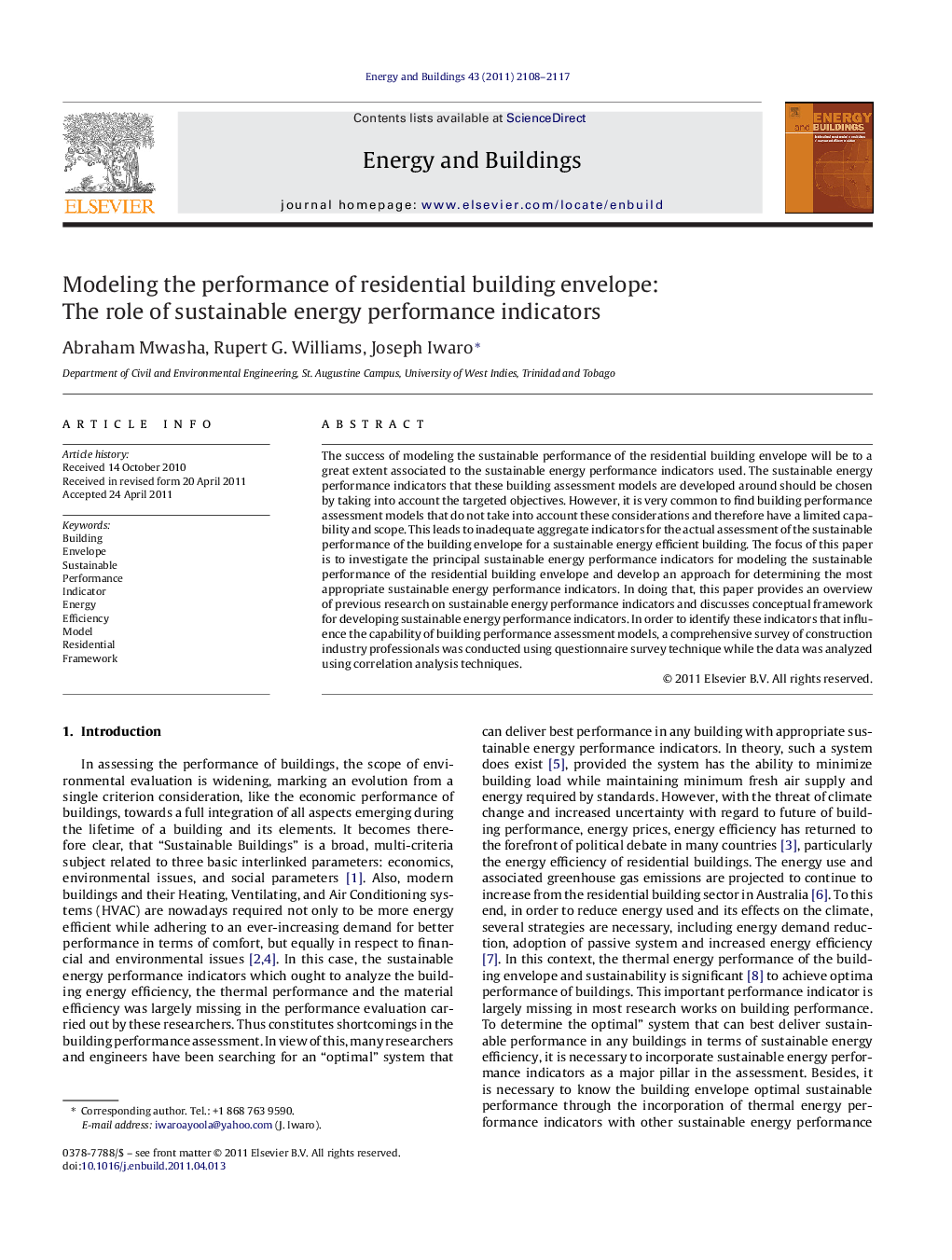| کد مقاله | کد نشریه | سال انتشار | مقاله انگلیسی | نسخه تمام متن |
|---|---|---|---|---|
| 264296 | 504098 | 2011 | 10 صفحه PDF | دانلود رایگان |

The success of modeling the sustainable performance of the residential building envelope will be to a great extent associated to the sustainable energy performance indicators used. The sustainable energy performance indicators that these building assessment models are developed around should be chosen by taking into account the targeted objectives. However, it is very common to find building performance assessment models that do not take into account these considerations and therefore have a limited capability and scope. This leads to inadequate aggregate indicators for the actual assessment of the sustainable performance of the building envelope for a sustainable energy efficient building. The focus of this paper is to investigate the principal sustainable energy performance indicators for modeling the sustainable performance of the residential building envelope and develop an approach for determining the most appropriate sustainable energy performance indicators. In doing that, this paper provides an overview of previous research on sustainable energy performance indicators and discusses conceptual framework for developing sustainable energy performance indicators. In order to identify these indicators that influence the capability of building performance assessment models, a comprehensive survey of construction industry professionals was conducted using questionnaire survey technique while the data was analyzed using correlation analysis techniques.
► We examined sustainable energy performance indicators for modeling sustainable performance.
► We carried out a survey of building professionals using questionnaire technique.
► We identified energy efficiency, environmental impact, affordability as performance indicators.
► Also identified were social benefit, material efficiency and durability.
► We developed a new approach for developing sustainable energy performance indicators.
Journal: Energy and Buildings - Volume 43, Issue 9, September 2011, Pages 2108–2117